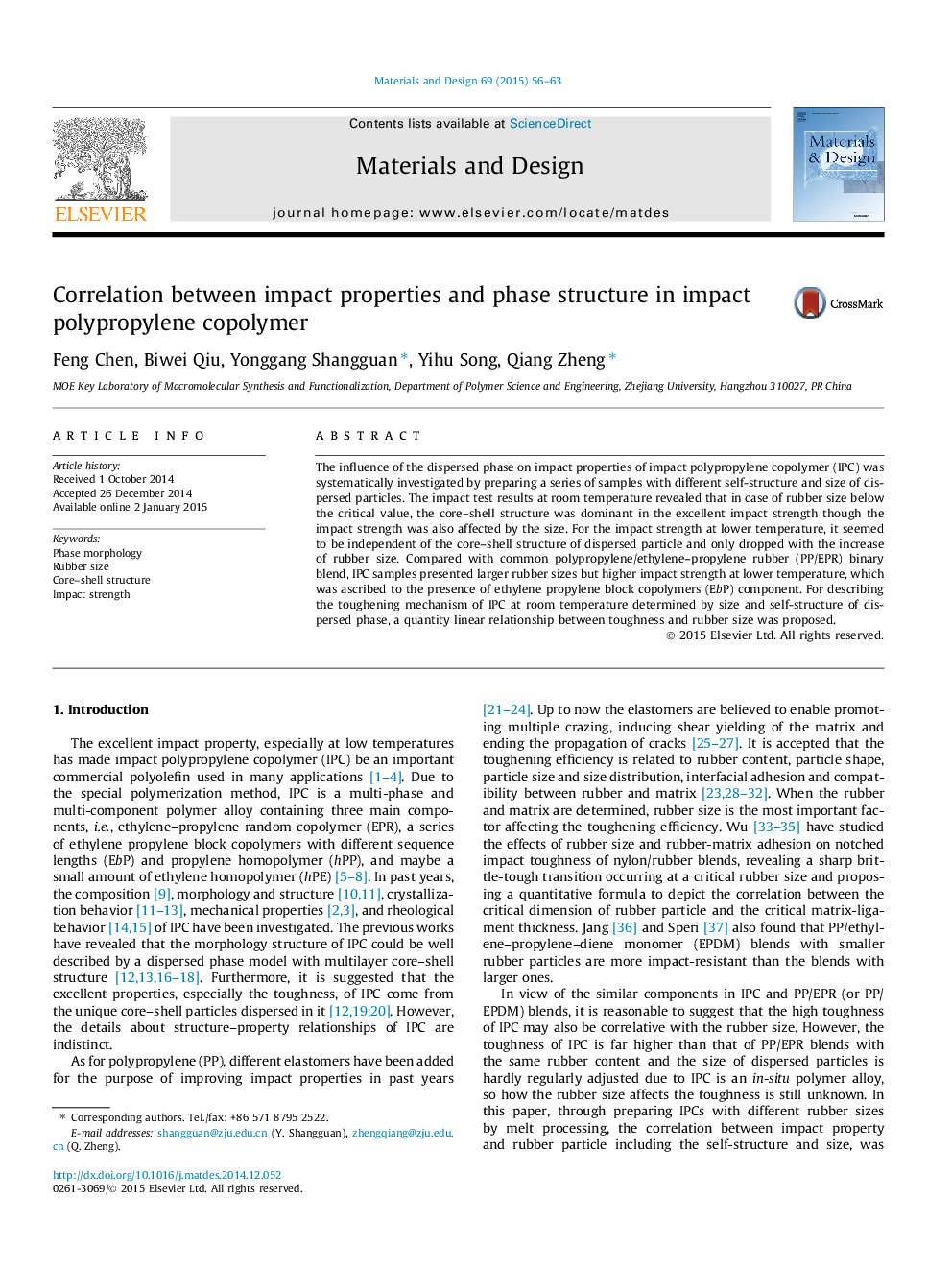| Article ID | Journal | Published Year | Pages | File Type |
|---|---|---|---|---|
| 828690 | Materials & Design (1980-2015) | 2015 | 8 Pages |
•Toughness is influenced by the structure of dispersed particle.•The samples with different self-structure and size were prepared.•Toughness at different temperature is contributed by different factors.•A linear relationship describes the toughening mechanism at room temperature.
The influence of the dispersed phase on impact properties of impact polypropylene copolymer (IPC) was systematically investigated by preparing a series of samples with different self-structure and size of dispersed particles. The impact test results at room temperature revealed that in case of rubber size below the critical value, the core–shell structure was dominant in the excellent impact strength though the impact strength was also affected by the size. For the impact strength at lower temperature, it seemed to be independent of the core–shell structure of dispersed particle and only dropped with the increase of rubber size. Compared with common polypropylene/ethylene–propylene rubber (PP/EPR) binary blend, IPC samples presented larger rubber sizes but higher impact strength at lower temperature, which was ascribed to the presence of ethylene propylene block copolymers (EbP) component. For describing the toughening mechanism of IPC at room temperature determined by size and self-structure of dispersed phase, a quantity linear relationship between toughness and rubber size was proposed.
Graphical abstractFigure optionsDownload full-size imageDownload as PowerPoint slide
